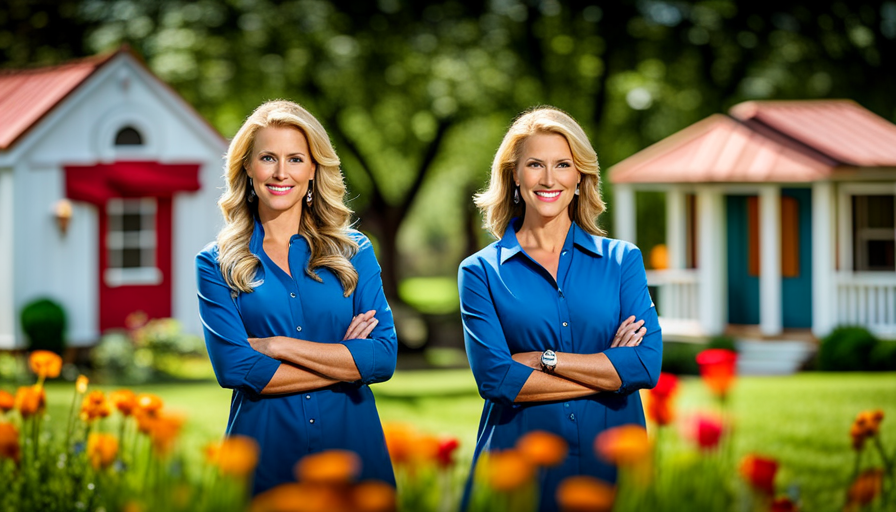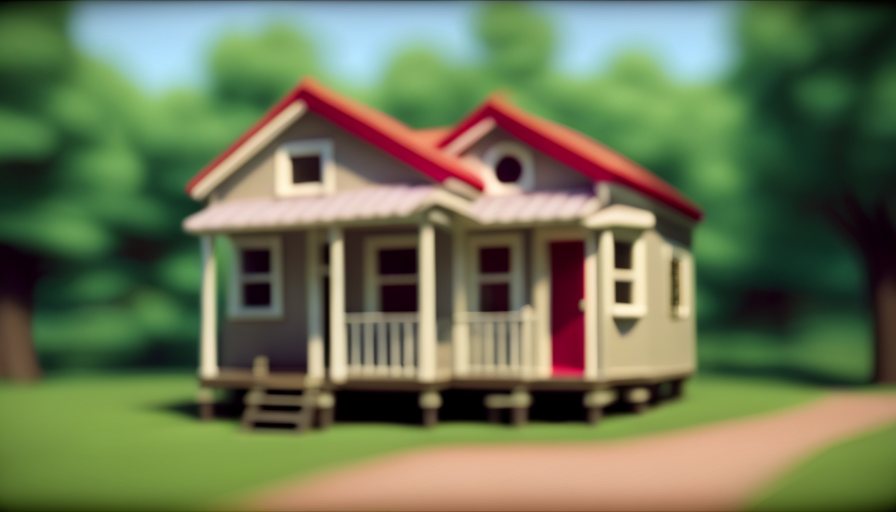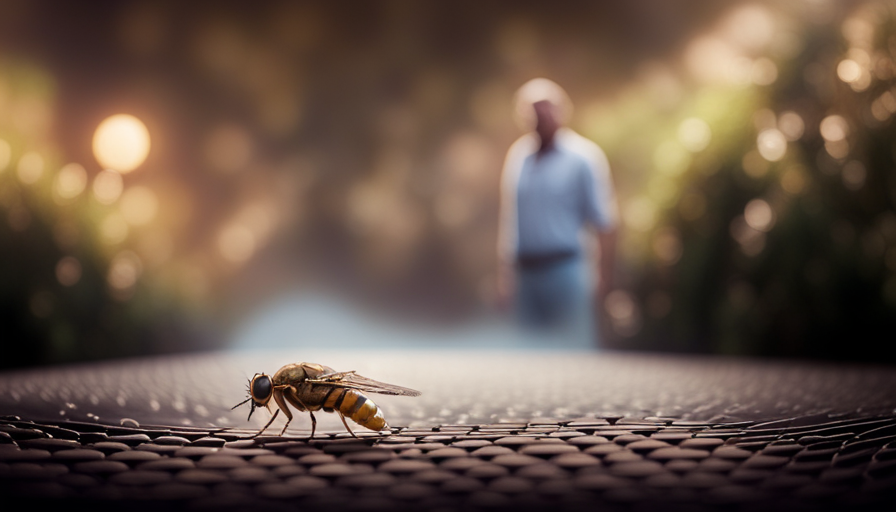Did you know that Flower Mound, Texas is considered one of the top destinations for tiny house enthusiasts in the United States? With its charming small-town feel and close proximity to the bustling city of Dallas, it’s no wonder people are attracted to this area, looking to embrace a more minimalistic lifestyle by downsizing into smaller homes.
And leading the way in the tiny house real estate market is none other than Bethany, a local realtor who gained national recognition for her appearance on HGTV’s Tiny House Hunters. With her expertise and passion for tiny living, Bethany has helped numerous clients find their dream tiny homes and navigate the unique challenges that come with this lifestyle.
In this article, we’ll explore Bethany’s journey to becoming a tiny house expert, her unique approach to real estate, and the success stories of her clients. Additionally, we’ll delve into the charming town of Flower Mound and provide tips and advice for those interested in tiny house living.
Join me as we discover the world of tiny houses with Bethany, the Flower Mound realtor who’s making waves in the tiny house community.
Key Takeaways
- Flower Mound, Texas is currently the hottest market for tiny houses, making it an ideal location for those interested in this unique housing option.
- Bethany, a local realtor in Flower Mound, is a leading figure in the tiny house real estate market, specializing in helping clients find their dream tiny homes and navigating the unique challenges that come with them.
- Flower Mound offers a small-town feel with the added benefit of being in close proximity to Dallas, as well as a rich history and a mix of charm and modern amenities.
- Bethany’s expertise lies in assisting clients with budgeting, considering size and layout considerations, finding the right location within Flower Mound’s specific zoning regulations for tiny houses, and maximizing space and functionality in these compact dwellings.
Bethany’s Journey to Becoming a Tiny House Expert
Bethany’s journey to becoming a tiny house expert began with a curiosity that grew and a passion that refused to be tamed. She embarked on a mission to explore the world of tiny houses, eager to understand their appeal and potential.
Along the way, Bethany faced numerous challenges, from navigating zoning laws to finding suitable financing options for potential buyers. Despite these hurdles, she persevered, constantly seeking knowledge and refining her expertise.
Some highlights of her journey include attending workshops and conferences, where she learned from industry leaders and connected with like-minded individuals. Bethany’s determination and dedication have made her a trusted resource in the tiny house community, and she continues to expand her knowledge by exploring the tiny house market in Flower Mound.
Transitioning into the next section, let’s delve into her experiences of exploring this unique market.
Exploring the Tiny House Market in Flower Mound
With the rise in popularity of compact living spaces, it’s like uncovering a hidden gem in the garden of real estate options. Flower Mound, Texas, is no exception when it comes to the tiny house movement. However, before diving headfirst into this unique market, it’s important to understand the tiny house zoning regulations in Flower Mound.
These regulations vary from traditional housing, as they often require specific permits and adherence to size restrictions. Additionally, it’s crucial to consider the cost of living in a tiny house. While the initial investment may be lower, ongoing expenses such as utilities and maintenance can add up.
Understanding these factors can help potential homeowners make informed decisions when exploring the tiny house market in Flower Mound.
Moving forward, let’s delve into Bethany’s unique approach to real estate, where she combines her expertise in tiny houses with her passion for helping clients find their dream homes.
Bethany’s Unique Approach to Real Estate
When it comes to helping clients find their dream tiny homes, I’m dedicated to understanding their unique needs and preferences. I work closely with clients to identify the key features and elements they desire in a tiny home. This ensures that their space is maximized for functionality and comfort. With my design expertise, I’m able to offer creative solutions for making the most of limited space, while still maintaining a sense of style and personalization.
How She Helps Clients Find Their Dream Tiny Homes
Finding the perfect tiny home for my clients is like solving a puzzle, carefully piecing together their unique preferences and needs. To help first-time buyers navigate the world of tiny homes, I provide guidance on financing options specifically tailored for these smaller dwellings.
Here are three important things to consider when searching for a dream tiny home:
-
Budget: Understanding how much you can afford and what financing options are available is crucial. I work closely with my clients to help them explore different financial avenues and find the best solution for their needs.
-
Size and layout: Tiny homes come in various sizes and layouts. I assist my clients in determining the ideal square footage and floor plan that will suit their lifestyle and maximize their space.
-
Location: Choosing the right location is vital. I help my clients find tiny home communities or suitable plots of land where they can legally park or build their dream tiny home.
In addition to assisting with the home search process, my design expertise allows me to maximize space and functionality in these compact dwellings.
Her Design Expertise in Maximizing Space and Functionality
By utilizing my design expertise, I astound my clients with the ingenious ways I maximize space and functionality in their dream tiny homes. One of the biggest challenges in tiny house design is finding enough storage options for all the necessary belongings. However, I’ve developed a keen eye for identifying hidden storage opportunities and implementing creative solutions.
From utilizing vertical space with built-in shelving units to incorporating multifunctional furniture pieces with hidden compartments, I ensure that every square inch of the tiny home is utilized efficiently. I also prioritize functionality by designing layouts that allow for easy navigation and flow within the limited space. By combining my design skills with a deep understanding of my clients’ needs, I create stunning tiny homes that are both practical and visually appealing.
Transitioning into the subsequent section about the charming town of Flower Mound, my expertise in maximizing space and functionality extends beyond the tiny homes themselves and into the larger community.
The Charming Town of Flower Mound
Immerse yourself in the picturesque charm of Flower Mound, where every corner whispers stories of serenity and beauty.
Flower Mound’s rich history dates back to the 1840s when settlers first arrived in the area.
Today, this vibrant town offers a delightful mix of small-town charm and modern amenities.
One of the best local attractions in Flower Mound is the Cross Timbers Trail, a scenic hiking path that winds through the town’s stunning natural landscapes.
Another must-visit spot is the Flower Mound Farmers Market, where you can indulge in fresh produce and local crafts.
The town also boasts a variety of parks, shopping centers, and restaurants, providing something for everyone to enjoy.
As you explore Flower Mound, you’ll discover why it’s the perfect place to call home.
Now, let’s dive into some client success stories with Bethany.
Client Success Stories with Bethany
As a realtor in Flower Mound, I’ve had the pleasure of working with many clients and helping them find their dream homes. One of the most rewarding aspects of my job is hearing the success stories from my clients.
From first-time homebuyers to growing families, I’ve been fortunate enough to play a role in their journey to finding the perfect home. These client testimonials serve as a testament to the hard work and dedication that I bring to the table.
Not only do I strive to find the right home for my clients, but I also take pride in my role in community development. By connecting individuals with the charming town of Flower Mound, I’m able to contribute to the growth and prosperity of the area.
Now, let’s dive into some tips and advice for those interested in tiny house living.
Tips and Advice for Those Interested in Tiny House Living
If you’re considering the idea of living in a tiny house, there are a few key tips and advice that can help make your transition smoother and more enjoyable.
One of the main benefits of tiny house living is embracing a minimalist lifestyle. It forces you to prioritize and declutter your belongings, resulting in a simpler and more organized living space.
Additionally, living in a tiny house can provide significant cost-saving benefits. With a smaller space, your utility bills will be lower, and you’ll spend less on maintenance and repairs.
It’s important to carefully plan and budget for your tiny house project to ensure you stay within your means. Researching zoning laws and building codes is crucial, as they can vary from one location to another.
By considering these tips and advice, you can embark on your tiny house journey with confidence and excitement.
As for Bethany’s future plans and impact in the tiny house community…
Bethany’s Future Plans and Impact in the Tiny House Community
Bethany’s plans for the future include continuing to advocate for tiny house living and making a lasting impact on the community through her innovative designs and sustainable practices. She firmly believes in the power of sustainable living and its positive effects on the environment. By promoting tiny house living, Bethany aims to inspire others to adopt a more minimalistic and eco-friendly lifestyle.
Bethany’s involvement in the tiny house movement has allowed her to witness firsthand the transformative effects it has on individuals and communities. Through her work as a realtor and her appearances on HGTV’s Tiny House Hunters, she’s been able to showcase the benefits of tiny house living and the importance of sustainable practices.
Bethany’s impact on sustainable living extends beyond her designs and advocacy. She actively participates in community events and workshops, sharing her knowledge and experiences with others. By doing so, she encourages a sense of community and collaboration within the tiny house movement, fostering a supportive and inclusive environment for all who are interested in this lifestyle.
Bethany’s passion for sustainable living and her dedication to the tiny house movement make her an influential figure in the community. Her future plans revolve around continuing to inspire and educate others, ultimately creating a more sustainable and environmentally conscious society.
Frequently Asked Questions
How did Bethany get selected to be on Tiny House Hunters on HGTV?
Bethany’s journey to appearing on Tiny House Hunters was a result of her unique qualities that made her stand out during the selection process. Her extensive knowledge and experience as a realtor in Flower Mound allowed her to showcase her expertise in the real estate industry.
Additionally, her charismatic personality and ability to effectively communicate with clients made her a standout candidate. These qualities ultimately led to her selection for the show.
What are some common challenges that people face when buying a tiny house in Flower Mound?
When buying a tiny house, common challenges can crop up. Compact living can create complications, such as limited storage space, cramped layouts, and zoning restrictions. Financing can prove difficult due to the unconventional nature of tiny homes. Maintenance and repairs can also be more challenging due to their unique construction. Buyers must carefully consider their lifestyle needs, as downsizing can be a major adjustment. Despite these challenges, the rewards of simplified living can make it all worthwhile.
How does Bethany’s unique approach to real estate differ from other realtors in the area?
Bethany’s unique approach to real estate sets her apart from other realtors in the area. She employs innovative and personalized marketing strategies to ensure her clients receive maximum exposure for their properties.
Additionally, Bethany prioritizes providing a personalized client experience, taking the time to understand her clients’ needs and preferences. This allows her to tailor her services to best meet their specific requirements, resulting in a more satisfactory and successful real estate transaction.
What are some popular attractions or amenities in the charming town of Flower Mound?
Popular attractions and amenities in Flower Mound include a variety of parks, lakes, and hiking trails for outdoor enthusiasts.
The town also hosts numerous community events throughout the year, providing entertainment for residents and visitors alike.
Shopping and dining options are plentiful, with a range of choices to suit different tastes.
Golf courses, sports facilities, and wineries offer additional recreational opportunities, while historical sites and schools showcase the town’s rich heritage and commitment to education.
Can you provide examples of specific client success stories that Bethany has had in the past?
I’ve seen firsthand the incredible impact of Bethany’s expertise in real estate through her numerous client success stories.
From finding the perfect dream home for a young couple to helping a family navigate the complexities of selling their property, Bethany’s guidance and dedication have been instrumental.
Her ability to understand clients’ unique needs and negotiate favorable deals is unmatched.
These success stories are a testament to Bethany’s unwavering commitment to her clients’ satisfaction.
Conclusion
In conclusion, my journey as a realtor in Flower Mound has led me to become an expert in the tiny house market.
I’ve had the privilege of helping clients find their dream tiny homes and witnessing their success stories.
Through my unique approach to real estate, I’ve been able to make a positive impact in the tiny house community.
As the saying goes, "Home is where the heart is." And for those interested in tiny house living, I’m here to guide and support you every step of the way.
Hi, I’m Emma. I’m the Editor in Chief of Tiny House 43, a blog all about tiny houses. While tree houses are often associated with childhood, they can be the perfect adult retreat. They offer a cozy space to relax and unwind, surrounded by nature. And since they’re typically built on stilts or raised platforms, they offer stunning views that traditional homes simply can’t match. If you’re looking for a unique and romantic getaway, a tree house tiny house might just be the perfect option.










